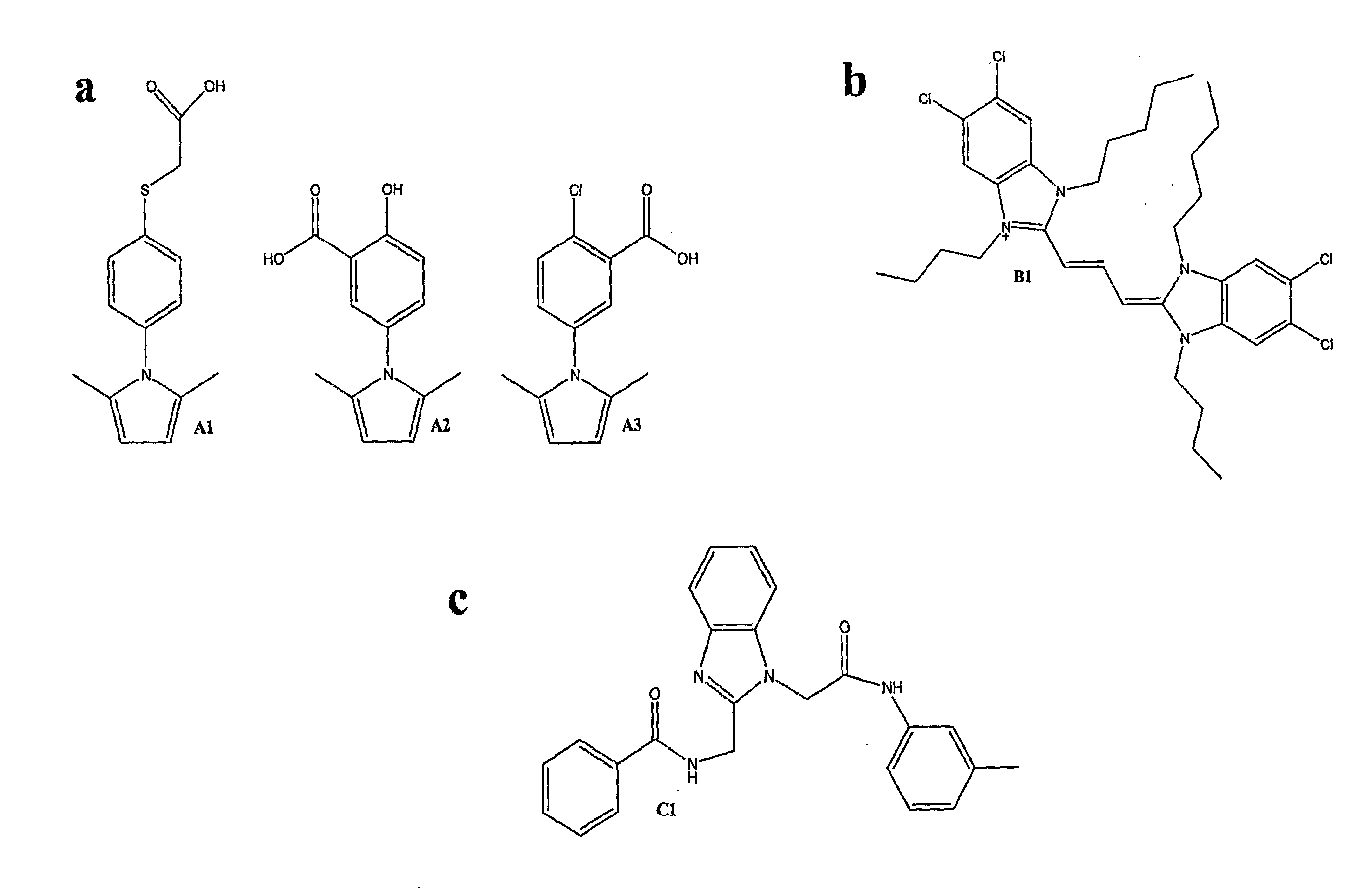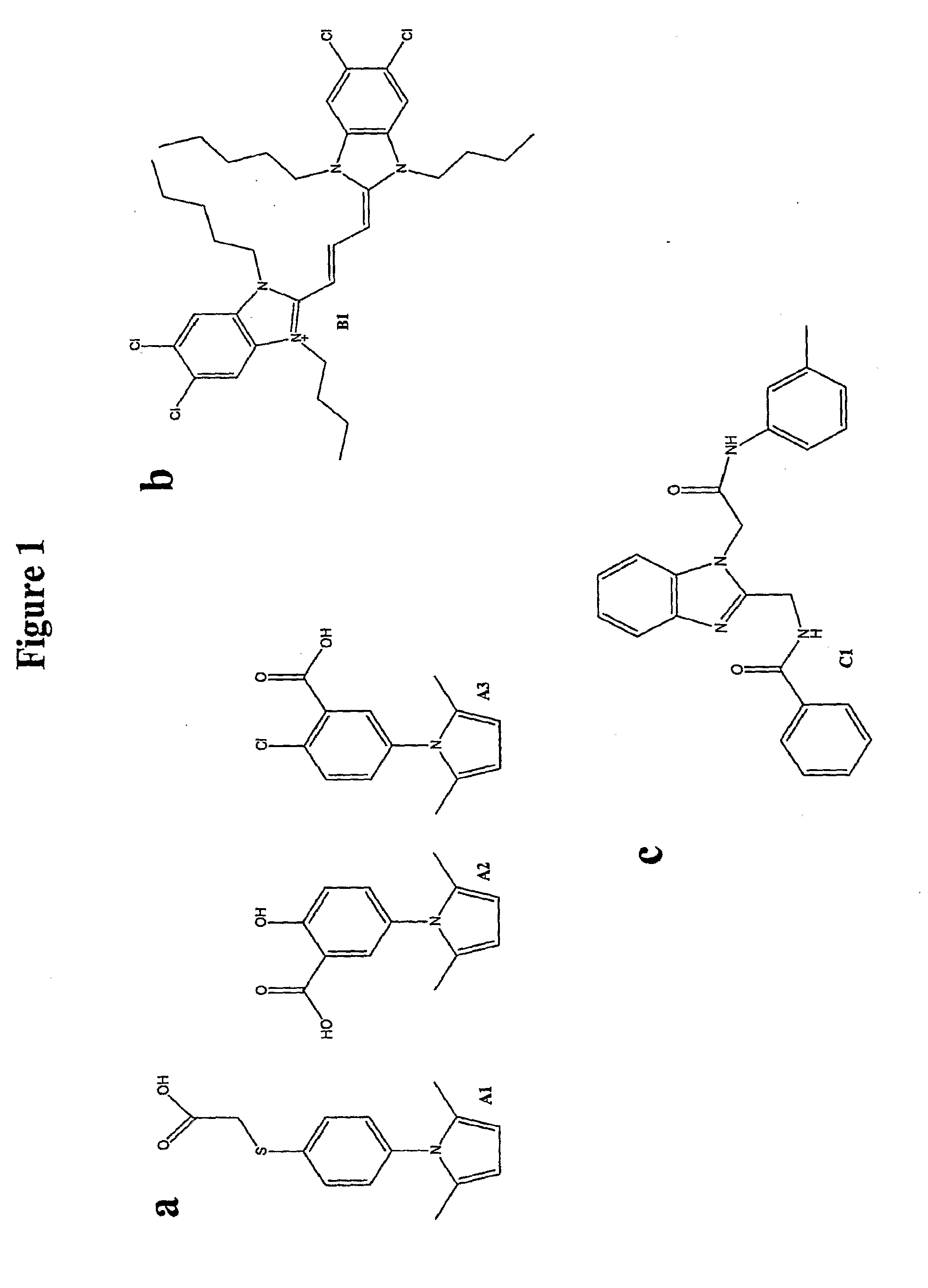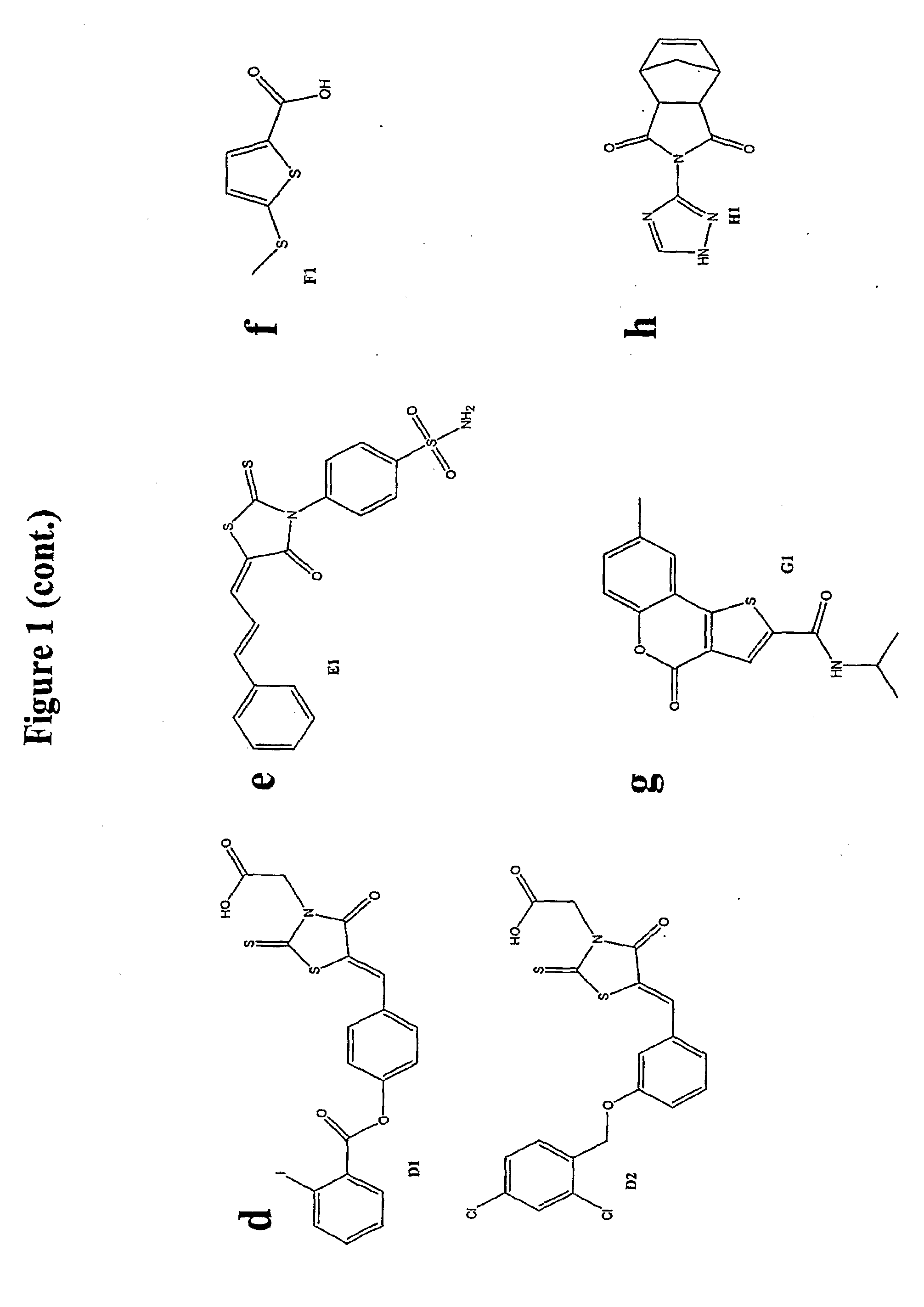Inhibitors of pyruvate kinase and methods of treating disease
- Summary
- Abstract
- Description
- Claims
- Application Information
AI Technical Summary
Benefits of technology
Problems solved by technology
Method used
Image
Examples
example 1
PKM2 Expression in Tumor Tissue
[0136]To confirm that tumor tissues switch PK expression from an adult isoform to the embryonic M2 isoform, antibodies that distinguish PKM1 from PKM2 were generated (FIG. 3). Mammary gland tissues from MMTV-neuNT mice, a breast cancer tumor model, were analyzed before and after tumor development for PK isoform expression. The cells were lysed in Nonidet P-40 lysis buffer and Western blot analysis was carried out according to standard protocols. As shown in FIG. 4a, the primary PK isoform prior to tumor development is PKM1; however, the primary isoform from four independent tumors is PKM2. All cell lines examined, including multiple cancer lines derived from different tissues, also exclusively express the M2 isoform of PK (FIG. 4b).
example 2
PKM Inhibition Decreases Glycolysis in Tumor Tissue
[0137]The role of PKM2 in glycolysis was assessed by short hairpin RNA (shRNA) knockdown (FIG. 5a). Cellular glycolysis rates were measured by following the conversion of 5-3H-glucose to 3H2O. The assay was performed with cells attached to tissue plates. The cells were washed once in PBS, prior to incubation in Krebs buffer containing 10 mM glucose spiked with 10 μCi of 5-3H-glucose. After one hour, triplicate samples of media were transferred to PCR tubes containing 0.2 N HCl and the amount of 3H2O generated was determined by diffusion, as has been previously described in the art.
[0138]The data show that stable knockdown of PKM2 in the human lung cancer cell line H1299 results in decreased glycolytic rates (FIG. 5b).
example 3
M1 Expression Reduces the Tumorigenicity of Lung Cancer Cells
[0139]To determine whether M2 isoform expression is important for tumor cell growth in vivo, xenograft studies were performed using the M1 and M2 rescue cells. Nude mice were injected with 5 million M1 or M2 rescue H1299 cells, and tumor growth was monitored over a seven-week period. As shown in FIG. 6a, mice injected with the M1 cells showed a delay in tumor development as compared with those injected with the M2 cells. Fewer tumors developed from the M1 cells, and those that did were smaller in size (FIGS. 6b and 6c). As judged by total tumor mass, the M2 cells gave rise to significantly larger tumors than the MI cells (FIG. 6d). Western blot analysis of the developed tumors shows the flag-tagged rescue mM1 and mM2 proteins are retained in the tumors. However, endogenous expression of PKM2 returned in both cases (FIG. 6e). No tumors were recovered that solely expressed mM1. To determine whether this was the result of los...
PUM
| Property | Measurement | Unit |
|---|---|---|
| Absorbance | aaaaa | aaaaa |
| Fluorescence | aaaaa | aaaaa |
| Selectivity | aaaaa | aaaaa |
Abstract
Description
Claims
Application Information
 Login to View More
Login to View More - R&D
- Intellectual Property
- Life Sciences
- Materials
- Tech Scout
- Unparalleled Data Quality
- Higher Quality Content
- 60% Fewer Hallucinations
Browse by: Latest US Patents, China's latest patents, Technical Efficacy Thesaurus, Application Domain, Technology Topic, Popular Technical Reports.
© 2025 PatSnap. All rights reserved.Legal|Privacy policy|Modern Slavery Act Transparency Statement|Sitemap|About US| Contact US: help@patsnap.com



